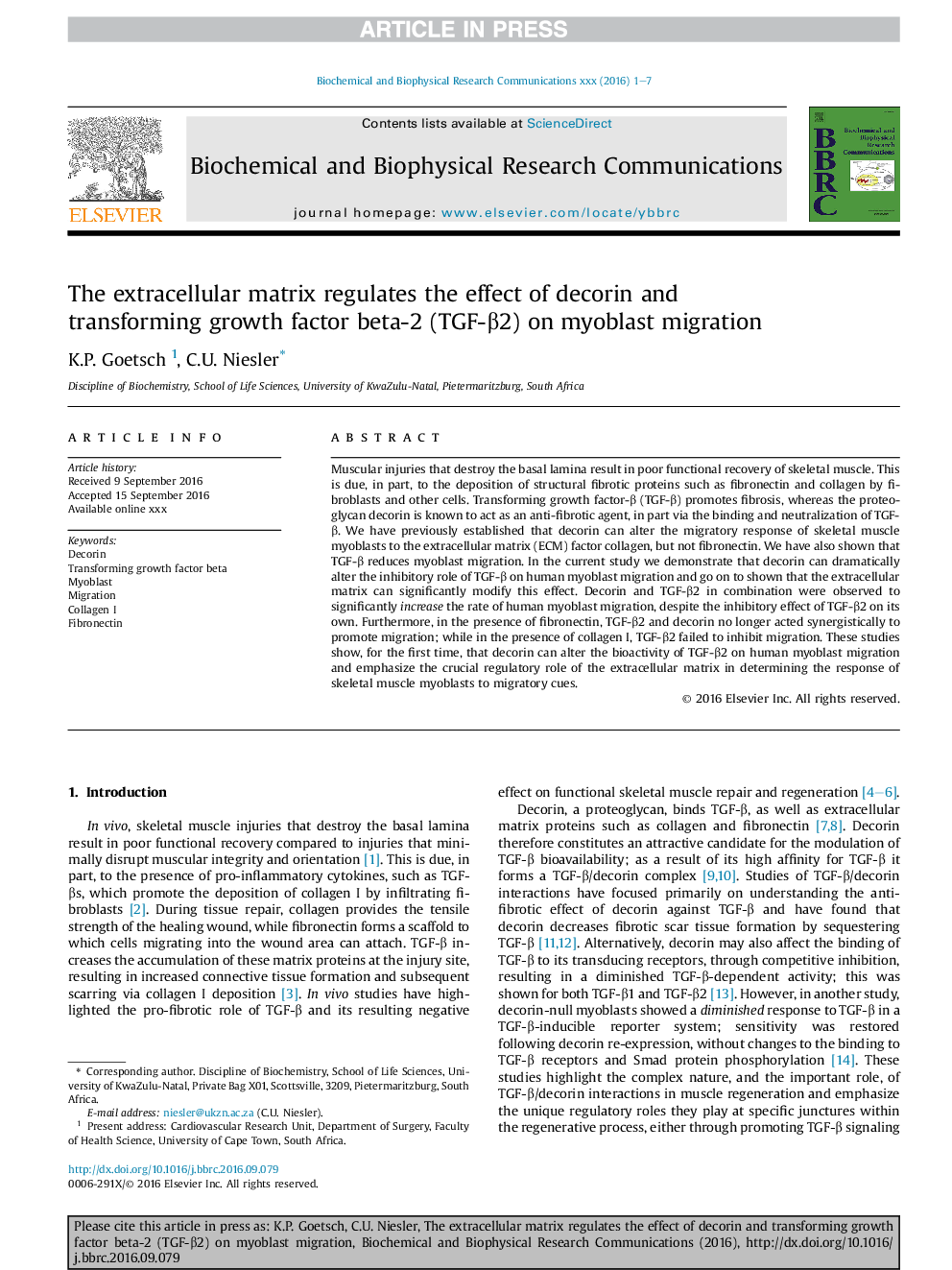| Article ID | Journal | Published Year | Pages | File Type |
|---|---|---|---|---|
| 5506947 | Biochemical and Biophysical Research Communications | 2016 | 7 Pages |
Abstract
Muscular injuries that destroy the basal lamina result in poor functional recovery of skeletal muscle. This is due, in part, to the deposition of structural fibrotic proteins such as fibronectin and collagen by fibroblasts and other cells. Transforming growth factor-β (TGF-β) promotes fibrosis, whereas the proteoglycan decorin is known to act as an anti-fibrotic agent, in part via the binding and neutralization of TGF-β. We have previously established that decorin can alter the migratory response of skeletal muscle myoblasts to the extracellular matrix (ECM) factor collagen, but not fibronectin. We have also shown that TGF-β reduces myoblast migration. In the current study we demonstrate that decorin can dramatically alter the inhibitory role of TGF-β on human myoblast migration and go on to shown that the extracellular matrix can significantly modify this effect. Decorin and TGF-β2 in combination were observed to significantly increase the rate of human myoblast migration, despite the inhibitory effect of TGF-β2 on its own. Furthermore, in the presence of fibronectin, TGF-β2 and decorin no longer acted synergistically to promote migration; while in the presence of collagen I, TGF-β2 failed to inhibit migration. These studies show, for the first time, that decorin can alter the bioactivity of TGF-β2 on human myoblast migration and emphasize the crucial regulatory role of the extracellular matrix in determining the response of skeletal muscle myoblasts to migratory cues.
Related Topics
Life Sciences
Biochemistry, Genetics and Molecular Biology
Biochemistry
Authors
K.P. Goetsch, C.U. Niesler,
